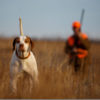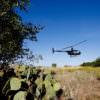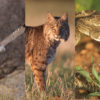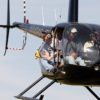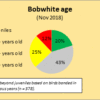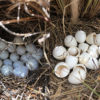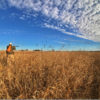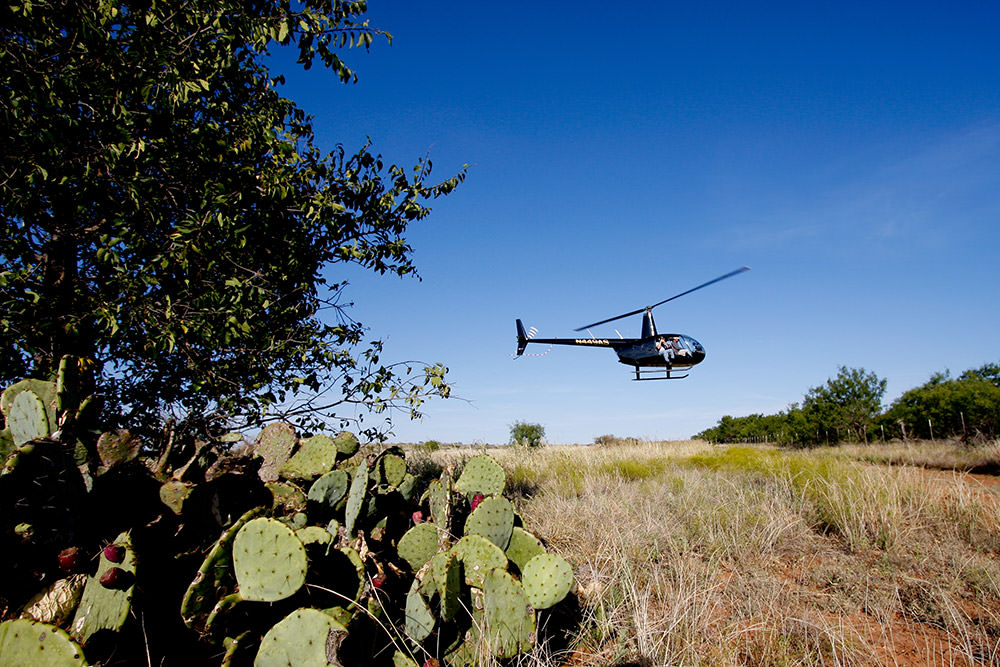
by Dana Wright
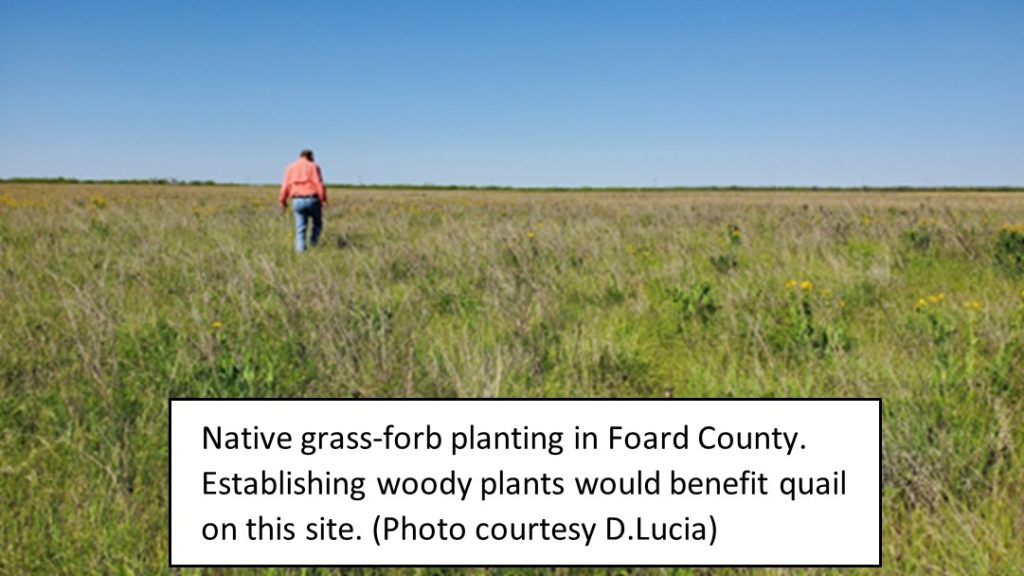 Most rangelands in west Texas have plenty of woody cover for quail, but there are situations when woody cover can be a limiting factor for quail. Examples could be when cropland is taken out of production and put into permanent grass cover (e.g., Conservation Reserve Program). If you are looking to plant cropland back to permanent grass cover and have an interest in quail, then you want that seed mix to be a mix of native grasses and forbs/weeds that would be beneficial to quail.
Most rangelands in west Texas have plenty of woody cover for quail, but there are situations when woody cover can be a limiting factor for quail. Examples could be when cropland is taken out of production and put into permanent grass cover (e.g., Conservation Reserve Program). If you are looking to plant cropland back to permanent grass cover and have an interest in quail, then you want that seed mix to be a mix of native grasses and forbs/weeds that would be beneficial to quail.
There are few woody plants available as a seed to plant in the mix, the only one we know of is Four-wing Saltbush, and trying to plant it from seed yields highly variable results. If your pasture is already established in a grass/forb mix, but is missing a woody cover component, then you may want to consider planting bare-root seedlings. Again, choose seedlings native to the area; in the Rolling Plains, Skunkbush/Aromatic Sumac, Wild/Sand Plum, Lotebush, and Four-wing Saltbush would be good choices and can be purchased as seedlings. Tips for success: plant late winter, use weed barrier fabric, use wire cages to keep out browsing animals (rabbits & deer) and be ready to give your seedlings a drink of water as needed. The Texas Forest Service’s West Texas Nursery near Lubbock sells seedlings, but they have already sold out of their shrubs for this year, so order early for next year. FMI see https://westtexasnursery.com/collections/all. Stan Elmore and Jonathan Reitz from southeastern CO (both QuailMasters alumni, class of 2014) have planted thousands of seedlings and observed good results in their area. Elmore says he gets seedlings from the Kansas State Nursery; contact them at https://www.kansasforests.org/conservation_trees/ or call 1-888-740-8733.
Another option for most CRP sites in west Texas is to “back off” the brush control and let woody plants re-establish over time. We have followed this method at RPQRR with regrowth mesquite. We use Individual Plant Treatment (IPT) to remove most mesquites, but leave strategic mottes about the size of a basketball court scattered across the landscape to create the desired arrangement of brush for bobwhites. This is a long-term approach, as it takes a mesquite seedling perhaps 5-20 years to attain the necessary growth to be useful as cover. The resulting landscape improves the amount of “useable space” for bobwhites on CRP contracts. Note: the Farm Services Agency may mandate that any CRP contract has to remain in “arable condition” using conventional equipment (i.e., a tandem disc). Here at RPQRR we opted out of the CRP contract 8 years ago because we believed more mesquite canopy was needed for quail habitat.


